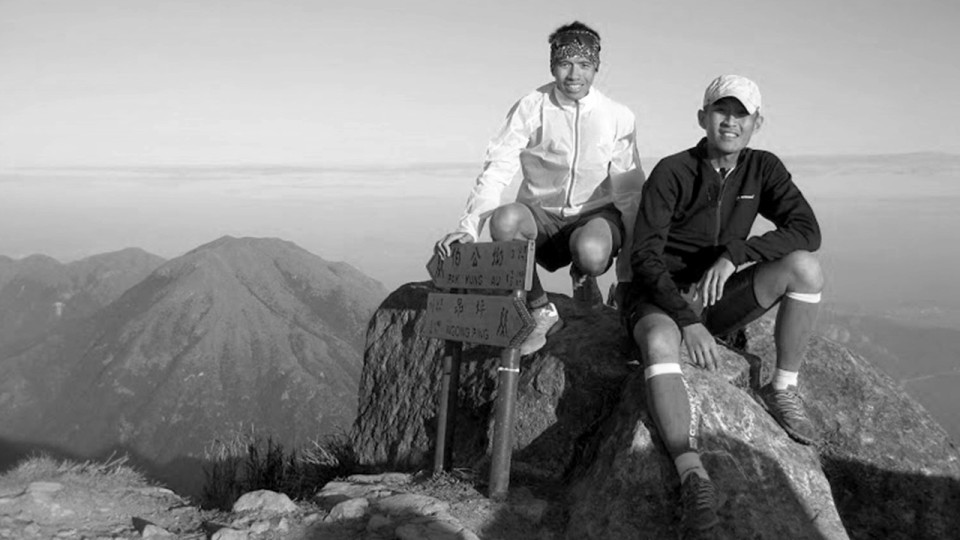Ian Lye and Chin Wei Chong may look like your typical Singaporean runners, but they accomplished what many dreamed, and few have achieved.
On 2 April earlier this year, the duo embarked on Project Saharan Footprints: a mission to master the Marathon des Sables (famously crowned by Discovery Channel as “The Toughest Footrace on Earth”), while raising awareness and funds for Save Our Street Dogs, a local animal shelter that aims to make a difference and effect change to the welfare of Singapore’s homeless strays.
They returned to Singapore triumphant, completing the gruelling 250km ultra-marathon held over 6 days in the Saharan Desert. In doing so, they managed to raise over S$27,000 for a charitable cause.
With preparation, determination, and compassion for a charitable cause, Ian and Wei Chong show that even ordinary people can achieve extraordinary things.
4 months after their momentous journey, RunSociety catches up with Ian and Wei Chong to share their experiences and how it changed their lives.
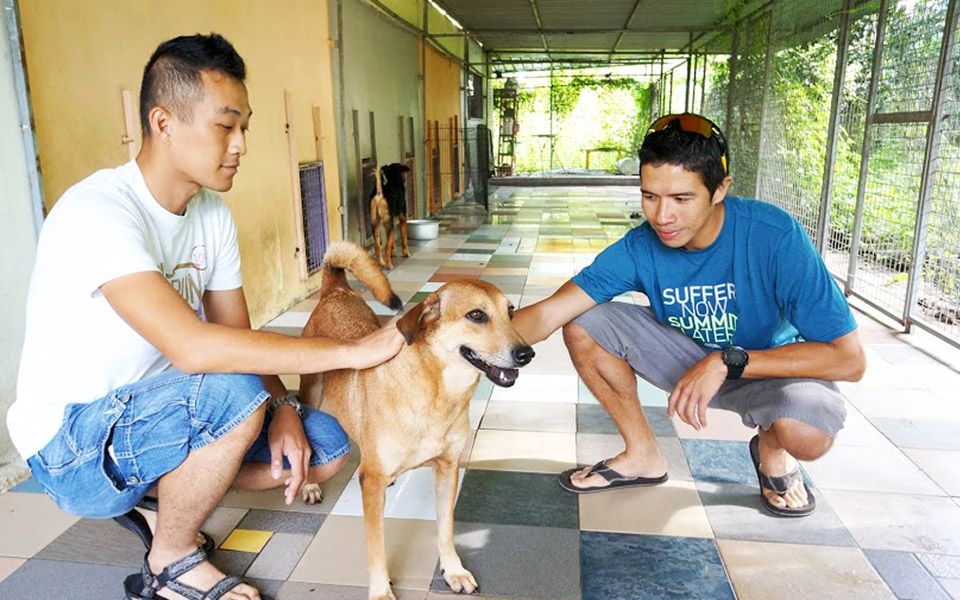
Q. First of all, tell us more about yourselves. What do both of you do for a living?
Ian Lye (IL): I work as Research Manager with Thomson Reuters, a multinational media and information company.
I’ve been running on and off since my NS days in the late 1990s, and even competed for my unit in short inter-squadron races, but never took it seriously until I got back from the United States in 2008 and started taking part in local races with Wei Chong. I finished my first marathon in 2010, and I’ve been hooked ever since!
In addition to running, I also play basketball regularly, which I find helps to strengthen the core muscles that are so important in trail running.
Chin Wei Chong: (C.W.C): I’m working as a Regional Marketer with a US background screening company called First Advantage.
I’ve been running since my NS days in 1999, but never competitively. I always felt that running clears my mind and gives me the mental sharpness to deal with work-related challenges.
I am blissfully married since 2009, and am fortunate to have a wife who understands my hobby and 2 beautiful boys who think I am their hero, for now!
Q. What inspired both of you to run the Marathon des Sables (MDS) together?
CWC: We have been running together for a few years and toyed with the idea of running an ultra-marathon. Once we did Sundown 100 in 2013, we again raised the bar by challenging ourselves to possibly take on a multi-stage ultra-marathon.
And if we were to do it, why not do the baddest and the toughest in the world? And that is when we did some research and came across the Marathon des Sables.
IL: The Sahara Desert always held a certain mystique to me. Ever since my first visit there in 2005, when I spent 2 nights camping with my local Tuareg guide in the Sahara in Morocco, I have always wanted to go back.
The idea of running in the desert itself was first planted in me after watching the documentary “Running the Sahara” several years ago.
Returning to the Sahara to race in the Marathon des Sables, the “grand-daddy” of multi-stage ultra-marathons, was thus the natural choice for me, a culmination of both of these long-time dreams.
Q. Why did you choose Save Our Street Dogs (SOSD) as your beneficiary?
IL: Given that I am supporter of animal causes in general and that I have a soft spot for dogs, I am a strong believer of the work that SOSD does for the stray dog population in Singapore.
One of the 3 dogs that I have, Christmas (named because he was rescued on Christmas Day 2011 in Punggol), was actually one of the first dogs ever rescued by SOSD way back in December 2011, and I fostered him and eventually adopted him a few months later.
To make a long story short, I know that animal groups like SOSD often have a harder time obtaining funds than the bigger, more established charities. The work they do is indeed admirable, but the struggle for the resources necessary to do it is a constant uphill challenge.
I felt that fundraising through this race would be one way to help Dr Siew and his team achieve their dream of building a new shelter for their dogs when their lease expires soon.
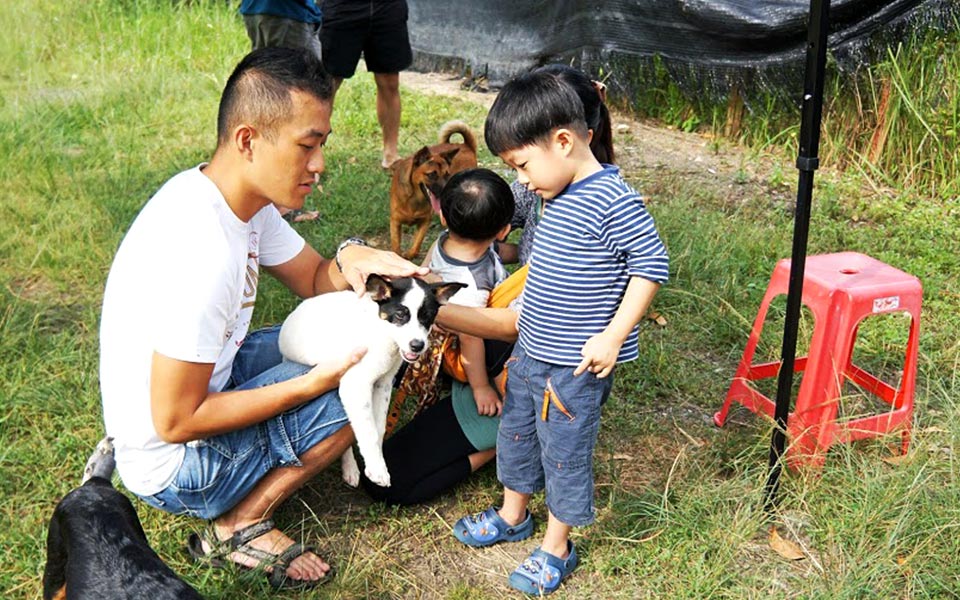
CWC: I was positive about the idea of telling my kids the importance of being helpful and kind to animals. I knew that Ian had previously adopted Christmas from SOSD, and when he floated the idea for us to raise funds for SOSD, I was all for it.
Q. While Singapore is a really sunny place, it is also very humid, averaging at around 70% to 80%. The Sahara has an extremely dry climate, often between 4% and 25% in summer, and even hotter temperatures approaching 50 degrees Celsius.
Was this your first time running such a distance? How did both of you prepare for this drastic change in climate?
IL: Yes, it was our first time running such a distance! While the both of us have been running in local races for many years, neither of us had ever ran a race in excess of a full marathon (42km) prior to 2013.
To get the confidence that we could run longer races, we signed up for the Sundown Ultramarathon 100km in September 2013, and trained progressively toward that, including finishing both the Sundown half and full marathon races on consecutive days in May 2013. Once we completed the Sundown Ultramarathon 2013, we started to feel more confident that we might actually be able to take on the challenge of doing a multi-day stage ultra-distance footrace like the MDS.
As part of our preparation for the MDS, our key focus over the last 3 months leading up to the race was to simulate the Saharan Desert’s punishing conditions including the harsh terrain and heat, which involved clocking runs of long distances on sand, trails and hills during the hottest hours of the day in Singapore, between noon to 5pm or 6pm.
We ramped up our weekly mileage from 80km to 120km and trained 4 to 5 times a week by hitting the sandy beaches of East Coast, running the undulating trails from MacRitchie to Bukit Timah, working on hill repeats at Bukit Timah, as well as running the Southern Ridges to Mount Faber and stair training. We each carried a backpack that weighed between 7-10kg.
During the last month leading up to the race, I also engaged in intensive core training 3 times a week. Finally, in the last 2-3 weeks before flying off, we took hot yoga classes (yoga in a room heated to 40 degrees Celsius) as a means of heat acclimatization and core muscle conditioning.
Q. What other training preparations did you take before setting off?
IL: We spent a lot of time and research on the Internet, poring over blogs written by past competitors and reading countless reviews of equipment. I would say we spent the last few months really geeking out over gear, debating minutiae like the merits over which brand of Ziploc would be lighter, stronger and more.
As the MDS is a self-sufficient race in terms of food, we also bought different flavours of the package freeze-dried foods online from Expedition Foods to test beforehand what “dishes” were actually palatable. After all, 6 days of eating freeze-dried food was already bad enough. We certainly didn’t want to be stuck with flavours that we couldn’t stomach!
My 2 personal favourites ended up being Chicken Tikka with Rice, and Fish and Potato with Parsley Sauce!
CWC: Apart from the research and food-tasting, the secret to success in such a long arduous journey is a positive mindset. So in order to stay mentally focused and positive, I told myself,
“Take the race 1km at a time. Keep ourselves hydrated. Get the necessary nutrients.”
Conquering these little milestones one day at a time will bring us to the finishing line.
Q. The desert climate is also known for having extreme day and night changes in temperature. Did that affect your rest?
IL: The extreme heat during the day (up to 50 degrees Celsius) was definitely challenging, but the fact that it was a lot less humid than Singapore made it a lot more bearable. In fact, I was surprised at how prepared we were for it, and I would even venture to say that in some ways, running in Singapore is even more uncomfortable than running in the Sahara!
Once we set up camp for the day, we would quickly stretch and gulp down recovery shakes to help get our bodies ready for the next day. We would also make a fire and prepare our food for dinner. A little bit like playing Survivor in the desert, really!
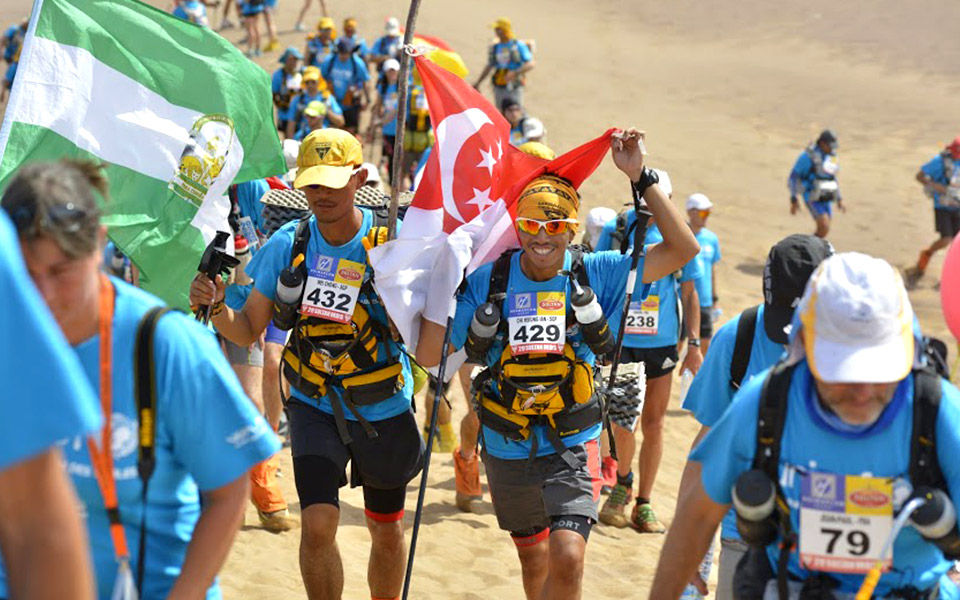
CWC: We ran through possibly some of the most scenic landscapes in the world and it was a pity that most of the time we just trudged along, eying the next checkpoint!
I’m used to running on hard grounds and trails, and to my dismay, running up and down sand dunes was so much more energy sapping. Getting your foot stuck in sinking sand step after step, shuffling up sand dunes, while continuing at pace for dozens and hundreds of kilometres. It can really take lot out of even the most experienced runners. After this race, I have a newfound respect for desert runners!
At night, the camp life was bustling with life. We met like-minded folks, spoke to runners from different nationalities, traded training stories, and forged bonds with them. These are really some of the memories I will treasure, and I will be keeping in close touch with many of the runners I’ve met during the race for sure.
But the exertion of the day was simply exhausting, and I was totally wiped out and dozing off by 9pm!
Q. The 250km Marathon des Sables is split up over 6 days. What were the easiest and toughest days?
CWC: The toughest day was the “Long Day” for sure! We were on the move for 22 hours straight, traversing over 2 hills and 82 kilometres of sand. I also injured my left Achilles at the 40km mark and had to struggle physically and mentally to the finishing line.
Mentally, I was just focused on reaching the next check point, celebrating small milestones and getting the morale up through running with fellow competitors from Singapore and Malaysia. I did start to wonder if the injury would result in permanent consequences, but a quick check with a doctor during one of the check points reassured me that I would make a full recovery.
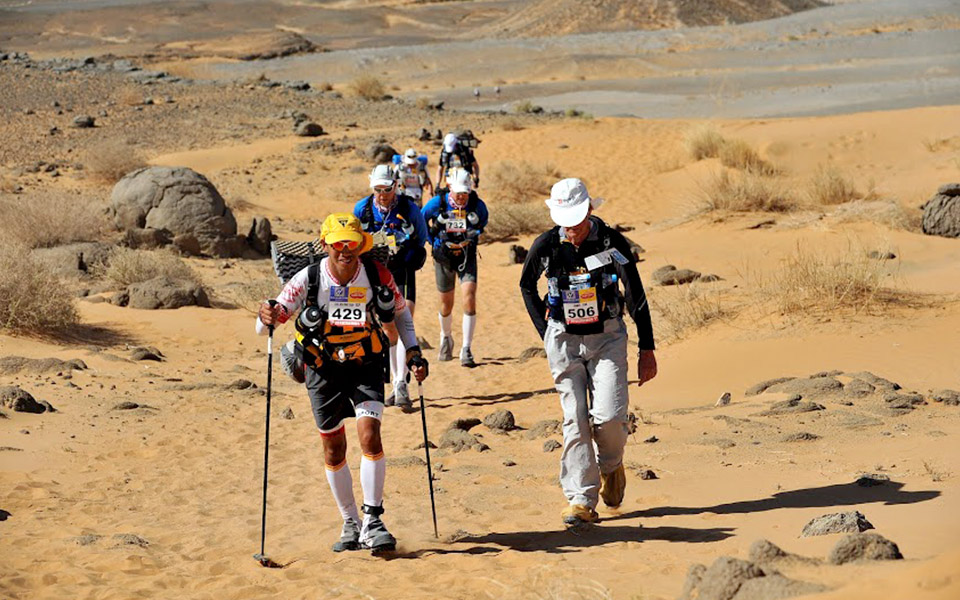
IL: The easiest day was the final timed leg, which was 42km long. Buoyed by the knowledge that we had gotten through the dreaded “Long Day”, and that all that stood between us and our dream of crossing the finishing line was a “mere” marathon distance, we were in high spirits, and wanted to finish the race strong with whatever I had left in the tank.
Surprisingly, I felt really good and energetic and was able to run virtually the entire distance, finishing with my best ranking for any of the stages by coming in 389 out of 917 competitors! I’m sure the fact that my backpack weighed about half the weight it did at the start (about 5kg compared to 10kg) was a huge factor though!
Q. Seeing the finish line must have exhilarating. Share with us what went through your minds after seeing the finish line.
CWC: A huge dose of euphoria and many other emotions running through the mind at the same time. The very first thought that went through my mind was relief, because we did not let SOSD, our sponsors and our supporters in Singapore down. It was only then that the sheer joy of completing such a tough race kicked in.
This race was a culmination of a year-long dream and we have been training and preparing extremely hard over 6 months for it. I was filled with pride and joy when we crossed the finish line with the Singapore flag.
IL: Perhaps the most poignant emotional moment came about 2km before the finish line. As I crested a hill, I suddenly saw the bivouac and finish line materializing in the distance, with only a few sand dunes separating me from it. Words cannot adequately describe the maelstrom of emotions that washed over me at that moment, as it was totally unexpected (I had expected there to be a few more kilometres).
So when I finally crossed that finish line, and got the finisher medal from Race Director Patrick Bauer, it was kind of overwhelming emotionally. Knowing that all the hard work, sacrifices, and time I had put in all those months had finally paid off and helped me accomplish this personal dream… Just thinking about it now gives me goose bumps.
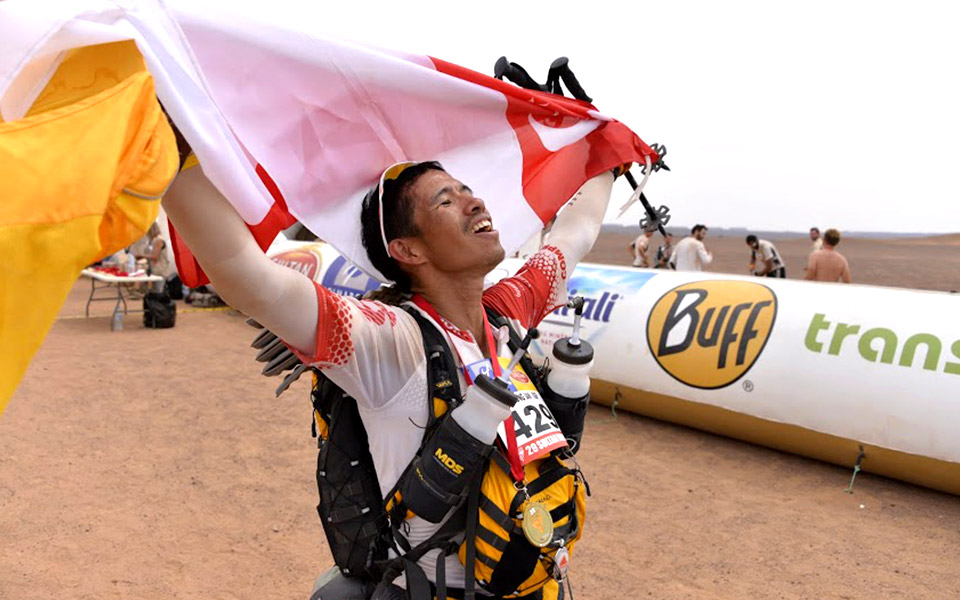
Q. It has been 2 months on completing the Marathon des Sables. What have you learnt from completing the toughest footrace on the planet?
CWC: A smile, a pat on the shoulder for your fellow competitors and a willingness to stop and lose a few places just to encourage a fellow runner will do a whole lot of good to your own mental psyche. It can be mentally tough when it is “you versus 250km”, but when it is “us versus 250km”, it gives everyone a boost.
The most touching moment of the race for me was when Nikki Kimball and Laurence Klein the female winner and runner-up, held hands and ran through a difficult stretch of the race, encouraging each other during the process. These were 2 of the world’s top runners vying for the same prize and yet they showed such compassion, friendship and sportsmanship towards each other. It was an unforgettable moment for me.
IL: I find that it’s really amazing how much more the human body is capable of than we think. The mental aspect of racing is just as important, if not more so, than the physical training. This really struck me when I met a Japanese competitor who had only trained for less than a month, and yet managed to use some mental techniques to help him complete the entire race. There was another South Korean actress who had only trained for a month as well, but she was able to finish it as well, as she was mentally very strong.
They say a journey of a thousand miles begins with a single step. Well, the MDS wasn’t quite a thousand miles, but you get the idea!
I guess the greatest take-away from the race for me is that it has given me the self-belief and knowledge that if we’re willing to take risks and commit to pursue our goals no matter what it takes, then we can summit even the highest mountains in our life, even those that seem insurmountable at first! But we have to take that first step, that leap of faith. And that’s so often the hardest one, isn’t it?
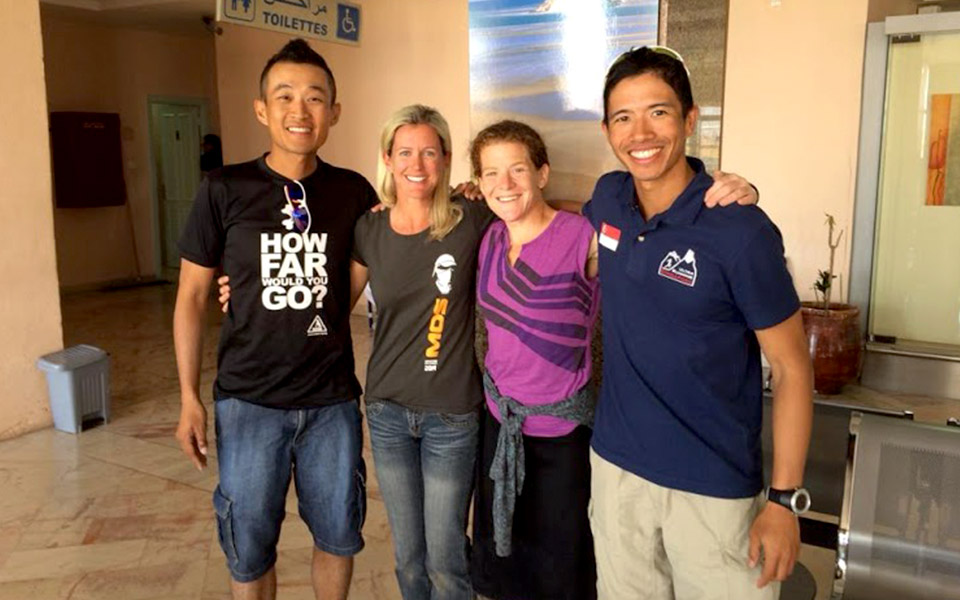
Q. How are you both coming along in terms of recovery and training?
CWC: I’ve still not recovered fully from my Achilles injury but it’s getting better. I saw a physiotherapist who told me to avoid long training runs for a couple of months, so I’ve been doing 5-10km runs for the time being.
The bad thing is I’ve put back the weight I’ve lost during the intensive training sessions! The wife’s saying I’m getting back in “shape” – the shape before I ran the MDS, that is!
IL: I’ve been pretty lucky as I did not suffer any serious injuries, so it’s been pretty much a smooth process. My heat blisters have healed now, and there are just some slight scars where they used to be. Guess those are souvenirs from my time in the desert to remind me of the MDS!
For the first week after I got back, I was also getting hungry all the time, and felt like eating everything in sight. It was pretty nice to be able to indulge without having to feel guilty or worry.
After a 3 week break, I ran the Sundown Marathon 2014, but I experienced a niggling injury in my right leg. Apart from some basketball sessions, I’ve taken a complete break from running since then.
I’ve started running and training around 2 weeks ago, and will probably do a small local trail race at the end of this month to get back into the swing of things. It felt weird to lace up the shoes and go on that first run. It feels like I’ve forgotten how to run fast, after so many months of training to run at a slower, sustained pace!
Q. Have you joined (or are you planning to join) any other running events?
CWC: I intend to do the 21km Starits Times Run in the Hub in September followed by the local 50km leg of the 2014 North Face 100 in October.
IL: I recently ran in the Singapore Energizer Night Trail to easy back into running, and I be joining Wei Chong for The North Face 50km next.
I will probably take on another ultra-race overseas in the second half of this year. I was planning on trying my hand at The North Face 100 Hong Kong 2014 this year, but I’ve also been invited by the race director of a 3-day trail race in Jeju Island, South Korea, to race there in October. I’m seriously tempted, as I’ve never been there before, so it would be an amazing way of seeing the country.
Longer-term wise, I would like to seek new experiences and races around the world, especially mountain trail races in the future. I hope to get more experience racing in the mountains, which is an entirely different animal from desert running.
Hopefully, this will prepare me to take on my longer-term goals of doing the Ultra-Trail Mount Fuji in Japan next year, and the Ultra-Trail du Mont-Blanc in 2016, which is the “holy grail” of mountain ultra-races!
Q. Having conquered the Marathon des Sables, what are some tips that you’d like to share with runners who are looking to run it someday?
IL: I would say be specific in your training. Since this is a desert ultra-distance race, and you’ll be crossing lots of soft sand, definitely do a lot of training on sand. It would also help to train during the hottest hours of the day to try and simulate the conditions in the desert. I found that hot yoga helped me in this aspect too. Definitely train often with your backpack, and incorporate a lot of power hiking into your training. You will definitely be doing a lot of walking in a race like this, and I was surprised at how much hiking we actually ended up doing.
Trekking poles are a life saver out there, as they will take some of the pressure of your quads when climbing up and down dunes and the mountains, which will help you conserve energy. I think our decision to take poles along just 2 weeks before flying out there turned out to be one of the best decisions we made in the entire race. Often I would be just hiking up a dune with gusto, while a fellow competitor beside me without poles would be grunting and struggling to climb up on the soft, sliding sand.
Finally, be adaptable and come with the expectation that no matter how prepared you think you are, unexpected problems will happen. I learned this on the evening before the start of the race when the chest strap on my backpack broke off, and I was panicking for a while, before using some velcro straps and duct tape my tent mates gave me to fashion some makeshift repairs at the last minute. And it worked! It held up through the entire distance!
CWC: A race like this is also about food and equipment preparation, getting your body in shape and ready for the harsh, unforgiving environment and lastly, being positive about the entire journey. It’s not only about crossing the line but also enjoying the entire process that will make this journey worthwhile!
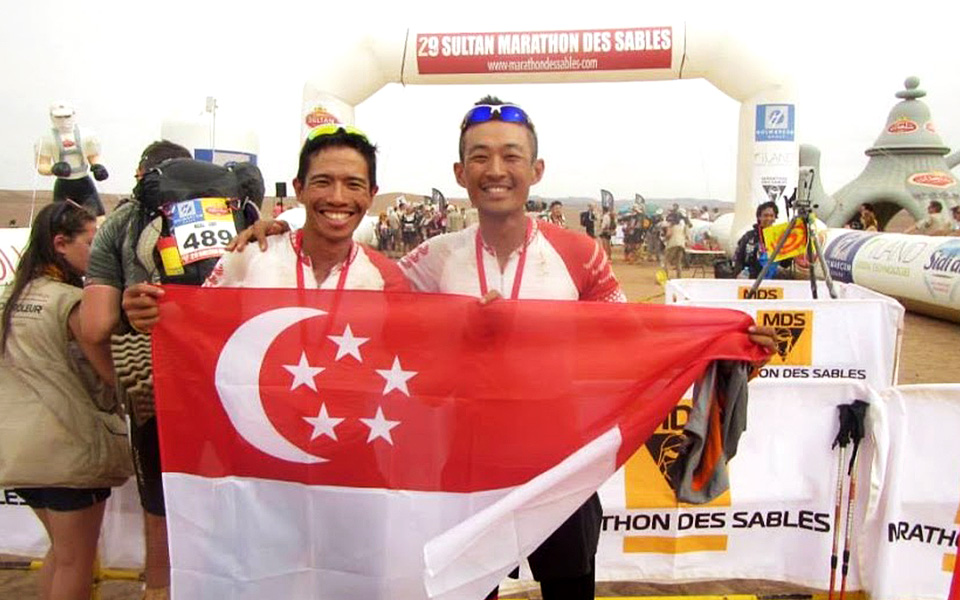
Wei Chong’s upcoming race will be the 21km Straits Times Run, while both Ian and Wei Chong will join The North Face 100 in October. RunSociety wishes them all the best!



